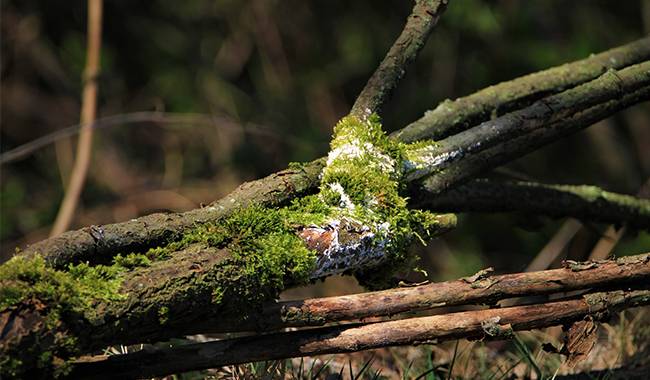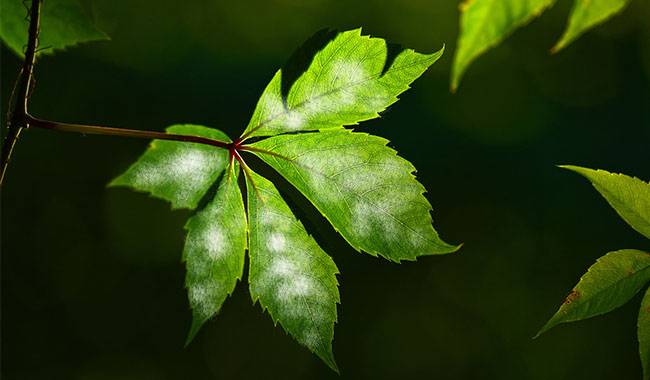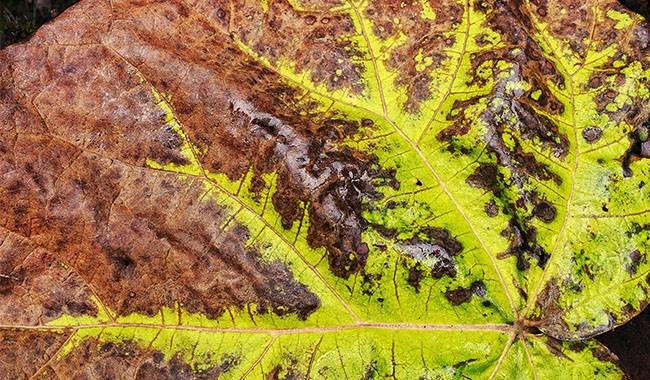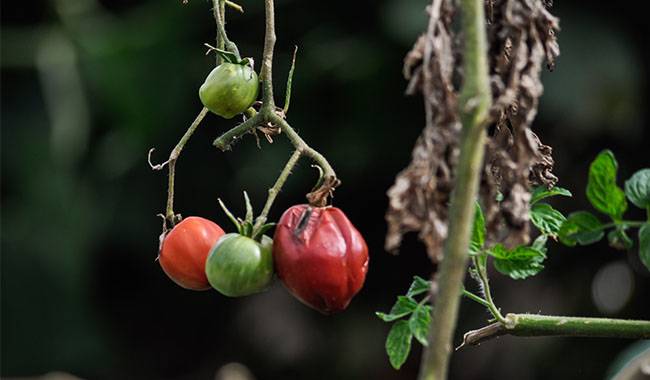
Midsummer has passed, which means that soon we will start to see frequent rainfall, cool nights, and fog – a favorite environment for Phytophthora, the scourge of vegetable crops (not only tomatoes but some other plants as well).
For example, bell peppers, eggplant, cucumbers, zucchini, squash. Needless to say! These are all good friends of ours. Even apple trees, strawberries, and grapes in the garden can suffer from Phytophthora.
We all know what Phytophthora is, and everyone probably has their own secret compound that helps them fight this infectious disease.
In this article, we will tell you how to avoid Phytophthora, how to fight it by less environmentally friendly means, and how to eradicate it by folk means, which are safe.
WHY DOES PHYTOPHTHORA APPEAR ON PLANTS?
Phytophthora, or phytophthora, is a disease that occurs due to the fungus Phytophthora, which lives in the soil. Usually, Phytophthora affects not only the leaves and stems of the plant but also the fruit, including the tubers, if we are talking about potatoes.
By the way, it is widely believed that Phytophthora happens to be the “main” disease of tomatoes, while at the same time it affects potatoes first, and only a week or two later other plants – tomatoes, eggplants, strawberries, etc. – are infected.
Fungal spores spread with wind and water, healthy plants come into contact with pieces of infected plants, and healthy fruits can become infected from unhealthy ones.
Contributing to the development of the fungus are:
- High humidity.
- A lot of dew in the morning (this is typical for August).
- Fog.
- High-temperature fluctuations during the day and night.
- The site is located in a lowland location.
If nighttime temperatures are around 50°F (10°C) and daytime temperatures are up to 71°F (22°C), Phytophthora will definitely take over your plants. Unless, of course, you take timely precautions.
PREVENTING PHYTOPHTHORA IN YOUR PLOT
The first thing to consider – planting areas under crops susceptible to Phytophthora – is that you need to choose a flat, level area free of stagnant melt or rainwater and cold air.
Watering of such plants should be moderate, only when needed, but do not allow the soil to dry out too much, as when Phytophthora dries out, it only promotes rapid maturation of fungal spores and winds them up throughout the plot.
Plant tomatoes, potatoes, strawberries, grapes, and other plants at a distance from each other so that they do not shade and do not interfere with the development of the root system and above-ground parts.
And in the event that one plant is infested with Phytophthora, such a distance will minimize the risk of Phytophthora transferring to another family of crops. You should also try to keep the ground as weed-free as possible.
In all operations, equipment should be disinfected when moving from one plant to another.
To do this, you should have a piece of cotton wool soaked in alcohol and a small bottle into which this wool must be dipped from time to time to wipe the blades of cutting tools, otherwise, the infection from the sick plant will be transferred to the healthy plant.
It is best to plant green manure crops on-site, they will actively add to the quality of the vegetation and pull excess water from the soil, and at the end of the season, the green manure can simply be trimmed and embedded in the soil – for a good green fertilizer.
Remember that the main source of Phytophthora on the site – is the soil itself, because the fungus lives there. Therefore, the main effort to prevent Phytophthora should be aimed precisely at soil disinfection.
If any plant in the bed gets Phytophthora, it is obvious – the fungus stays in the soil and will affect the next planting if you do not take any action.
What steps can be taken to disinfect the soil as part of Phytophthora prevention? Destroy the fungal spores with a fungicide or a biological agent with similar action.
If treating with chemical agents, it is best to do so in autumn, after harvest, or in early spring so as not to damage the quality of vegetables grown on this soil.
Prevention can also be achieved by using mulch. Mulch prevents fungal spores in the soil from penetrating the plant because they enter the plant with the moist air that rises from the soil.
If you cover the soil with a thick layer of mulch in the spring, it can be a barrier to many plant diseases, not just Phytophthora.
Prevent phytophthora on tomatoes
By isolating tomatoes from other plants that could be infected with Phytophthora (or at least from potatoes), you already have an effective preventive measure in place.
In addition, tomatoes need careful care and maintenance, which will strengthen the plant’s immunity to the fungus. It is obligatory to collect all plant residues in the fall and to completely re-till the plots used for tomatoes in the spring.
When planting eggplants and bell peppers, follow the same methods for preventing Phytophthora as for tomatoes.
Phytophthora prevention on strawberries
Garden strawberries, which we stubbornly call strawberries, are affected by Phytophthora no less than tomatoes. The main method of prevention is to plant strawberries in a sunny and ventilated place.
Be sure to collect ripe berries in time, remove traction and fallen leaves – in autumn, in summer – and destroy the berries and leaves still affected by the fungus. To do this, remember to double-check your strawberry bushes from time to time.
Mulch helps to reduce moisture in the soil during rainy days, after all, where there is high humidity and wetness – there is Phytophthora. planting onions in rows with strawberries is also believed to protect the latter from Phytophthora.
Try planting one bulb every four to five bushes. It may be this technique that will help you protect your strawberry plantings from Phytophthora.
Prevent phytophthora in potatoes
Eliminate all diseased tubers when planting potatoes and plant only healthy rootstocks – this is the key to growing potatoes on plots free of Phytophthora. Unless, of course, the plot used for growing potatoes is itself infected with the fungus.
In such a seedbed, potatoes can be planted no earlier than 3-4 years, and in that time you must sow infected land with legumes that are not afraid of Phytophthora and can significantly improve soil quality.
Help protect potatoes from Phytophthora and treat the planting material preventively – spray the tubers with a special solution of trace elements.
It can be made by diluting 2 g of copper sulfate and 10 g of boric acid in 10 liters of water, or 10 g of manganese in the same volume of water.
Prevention of phytophthora on apple trees
The main measures to prevent the fungal infestation that causes Phytophthora on apple trees and other fruit trees are considered the following agronomic techniques.
- Collection and destruction of fallen leaves and fruits
- Cleaning and covering wounds on plants with horticultural varnish, including after sanitary or formative pruning
Prevention of phytophthora in grapes
In order to keep the grapes free from Phytophthora, it also helps to cultivate the correct agricultural techniques.
- provision of all nutrients to the plant
- optimal humidity (do not overfill them, but do not make them dry either)
- Adequate amount of sunlight.
- Remove and destroy infected plants.
Do not be lazy in disinfecting the soil before planting a new vineyard to avoid the possible presence of fungi.
SYMPTOMS OF PHYTOPHTHORA ON VARIOUS CROPS
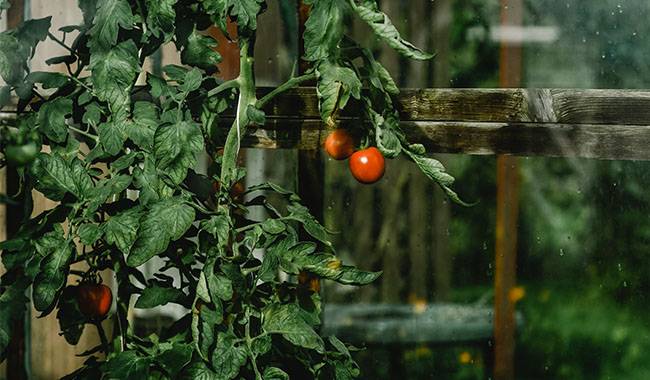
In general, the risk of Phytophthora on plots is minimal if prevention is done properly, but sometimes weather conditions remain such that the fungus can enter the plants very easily.
And here it is important to understand that it is Phytophthora, so you can quickly eliminate the infected lesions and not let them spread throughout the area.
Usually, Phytophthora manifests itself as brown or brown spots on the leaves, stems, or fruits of the plant. If the infestation is widespread, the fruit will become coarse and the leaves will shrivel and fall off.
Phytophthora on tomatoes
Phytophthora on tomatoes first manifests as dark brown moist spots on stems and leaves. Also, as a rule, the backs of the leaves are covered with a white coating when wet.
Soon the spots appeared on the tomatoes themselves and later the whole fruit was infected and unfit for consumption.
The fungus is easily transmitted from diseased to healthy vegetables, so all diseased plant parts and fruits should be removed and destroyed (tomato fruits, which are only slightly affected by the fungus, are allowed to be left to ripen and eat fresh, but it is not worthwhile to can them).
Phytophthora on peppers and eggplants
On these crops, Phytophthora behaves in the same way as it does on tomatoes. In addition, even young eggplant and pepper seedlings often die from the effects of the fungus.
To prevent this, you need to treat them promptly with fungicides.
Phytophthora on potatoes
Phytophthora is particularly common on potatoes during the flowering period. First, spots appear on the lower leaves, then on the upper leaves.
They grow rapidly, and without timely intervention, the plant may die – the green masses of the potato wilt, turn black, and wilt completely.
Root crops can also be affected by Phytophthora. Sharp grayish-white border spots first appear on them, then turn brown and harden to look like depressions.
When the disease occurs, the spots cover the entire surface of the fruit. If you cut it in half, you can see rusty areas on the periphery of the potato, and these areas narrow toward the center.
Botrytis cinerea on strawberries in the garden
When the strawberry in the strawberry garden is affected by the fungus, its berries and leaves, as well as the flowers and even the beard, are affected. The flowers acquire red spots and the leaves and stems turn brown and wilt.
On the berries, which are still green, you can see brown spots with lighter edges. They dry out before they ripen. Phytophthora on strawberries usually appears in the second half of June.
Phytophthora on apple trees
The appearance of Phytophthora on apple trees is almost a foregone conclusion. In fact, this fungus first affects the root neck of the tree. The tissue in this area turns purple-blue, the bark cracks, and the dark brown rotten heartwood is exposed.
In theory, such a tree can be treated, but it is easier to prevent Phytophthora on apple trees (we wrote about prevention above). In most cases, trees with Phytophthora are uprooted to prevent the disease from spreading on the plot.
Phytophthora on grapes
Phytophthora is no less harmful to grapes than it is to apple trees. Initially, the fungus affects the roots, causing them to rot, and then – sores and cracks appear on the stems, which ooze sap.
If the disease is not eliminated, the color of grape leaves changes, they become light and fall off. tThe fruit rots, and soon the plant dies.
WAYS TO CONTROL PHYTOPHTHORA
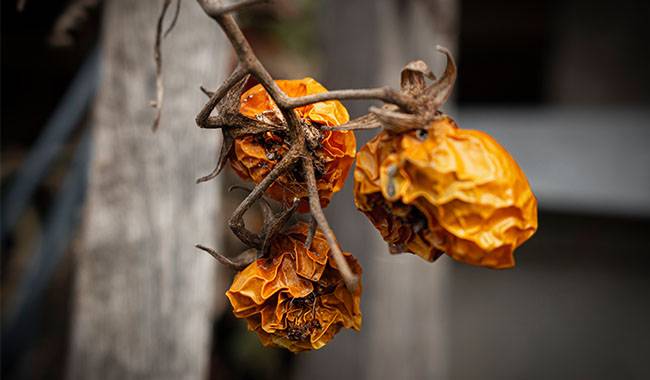
If you find a patch of leaves, stems, or fruits affected by Phytophthora, remove and destroy them immediately and treat the plants and soil with Phytophthora immediately.
Chemicals for Phytophthora Control
However, if you still have Phytophthora on your plot, it is likely that you will not be able to get away without using chemicals.
But first, you need to collect all the fruits before the phytophthora has arrived and try to disinfect them (if we are talking about tomatoes).
As for other crops, you can’t do it there without using chemical or folk remedies. Let’s say potatoes – they can’t be removed from the soil before the deadline, so you need to treat them properly.
As for chemicals, you can use fungicides in the first signs of Phytophthora, strictly follow the instructions on the package and make sure to wear protective clothing. All treatments must be done at night; if you treat them during the day, you will burn the leaves of the plant.
Biological agents against Phytophthora
In addition to chemicals, you can also use biological agents. They contain bacteria that are in a dormant state, but once they come into contact with water, they are activated and start working.
Of course, biological products are less effective against Phytophthora because they are much less strong and are washed away by rain and irrigation water, often without time to work, so they must be treated more often than chemicals, fungicides.
However, they are safe for humans and the environment.
Folk remedies for phylloxera control
Kefir and milk to control Phytophthora
Treat with kefir and milk whey, containing a solution of both in one liter of water per bucket. For greater effect, you can add half a cup of sugar to the resulting composition.
Such a treatment can be carried out in the evening of the week, but only after the end of the flowering period and with ovaries.
In fact, the milk bacteria, more precisely, the yogurt fungus, literally kills the infection by completely inhibiting the development of phytophthora. If the solution can be kept on the twigs for a few days, the effect will be very good.
Effect of iodine and boron on Phytophthora
A mixture of iodine, boron, and dairy products has a very strong antibacterial effect. There are many options for preparing plant treatments with these ingredients. For example, you need to take half a bucket of water, pour a liter of milk there and add 25 drops of common iodine – this ingredient can even treat plants infested with Phytophthora every day until the disease is completely defeated.
Or here is another composition: in six liters of water, you need to pour a couple of liters of milk whey, pour 200 grams of ordinary sugar, and 20 drops of ordinary iodine – such a treatment can be carried out literally every day until the complete eradication of Phytophthora.
The following recipe: take seven liters of water, mix it thoroughly with one liter of whey, add 40 drops of iodine and one tablespoon of hydrogen peroxide to the composition. This recipe is also safe and it is very possible to defeat Phytophthora if you spray the plants in the evening.
Boron on Phytophthora
This drug can really fight Phytophthora by simply diluting 7-8 grams of boric acid in a bucket of water heated to room temperature and treating the above-ground parts of the affected plants. If you want to maximize the effect, you can add 25-35 drops of iodine.
If you cannot defeat Phytophthora, you can use heavy artillery – boil half a bucket of water, pour half a kilogram of wood ash directly into it, then let the ingredients cool to room temperature, add 8-9 grams of boric acid and 7-8 ml of iodine and let the mixture stand for 24 hours.
Before use, the mixture should be diluted 10 times with water and sprayed as thoroughly as possible on all above-ground parts of the plant.
It is important – before applying this remedy – to remove the areas infected with plant viruses.
A solution to combat Phytophthora with ash
It’s no secret that wood ashes contain, in addition to 5% potassium, a large number of trace elements, exactly what tomatoes need to function properly and improve their immunity.
To prepare a mixture that can be sprayed on the plants, you need to dilute about 2.5 kg of ash in a bucket of water and leave it for a few to three days, stirring the mixture daily.
Once the solution is prepared, you need to add a bar of laundry soap as an adherent to bring the volume of this solution to 40 liters and spray it daily until the infection is completely gone.
If there is no phytoplasma outbreak, then this ingredient can also be used as a preventive. You can then treat the plants with it no more than three times during the growing season, usually immediately after sowing seedlings, and then in the early stages of flowering and immediately after oviposition formation.
Yeast control Phytophthora
The yeast component is prepared by diluting about 100 g of fresh yeast in a bucket of water and watering the plants with this component at the end of flowering and when bud formation begins.
Garlic tincture against phylloxera
Use everything – as well as the above-ground parts of the garlic plant and garlic cloves. Need about a cup and a half of garlic, grind it as much as possible, add it to a bucket of water, cover it and leave it for a day, then strain it through three layers of gauze, add a few drops of manganese and treat this compound every two weeks, as soon as the plant will begin to form buds, even if they are only small.
Important: this component should be treated as thoroughly as possible, for example, not less than half a liter of infusion per bush of tomato flowers.
Use copper against Phytophthora
Use copper against Phytophthora, as probably even schoolchildren know: you should do this whenever the stem grows so large that you can put the thinnest copper wire through it.
You should pierce the stem at the bottom, first sharpening part of the wire-like a needle and disinfecting the wire and the stem with alcohol.
To avoid injury, after piercing the stem, the ends of the wire can be bent toward the soil. This procedure is usually performed early in the morning when the stem is engorged with blood.
Mushroom trout (fire fungus) on Phytophthora
In the fight against Phytophthora, it seems that anything goes, and here, mushroom troutgrass finds its place. Of course, do not use the part of the mushroom, attach it to the sore or rub them on the affected area, to prepare an infusion, first dry the fungus.
Then grind it with a sharp knife, or even with a coffee grinder, after which pour 90-120 grams of mushrooms into a liter of boiling water and let it stand until the water temperature equals room temperature.
It remains to filter the solution well through several layers of gauze and irrigate the affected plants with a sprayer, starting from the top and working down.
By the way, the first treatment of tomatoes is best done when the first ovary appears, and the rest – every 12-14 days (with special care, if the effect of Phytophthora on the plants intensifies).
Horsetail for Phytophthora control
In a considerable number of natural remedies, a decoction of horsetail helps against Phytophthora. gardeners believe that such a decoction significantly improves the immunity of the plant.
What you need to do – this is a liter of water, preferably soft, place 120 grams of fresh horsetail, which grows in large quantities on acidic soil, and cook on low heat for half an hour.
Then dilute the resulting decoction with water five times, and you can safely use it to treat the plant until the plant disease is completely gone.
Conclusion. Thus, we see that, like any disease, Phytophthora is better prevented than treated in the long term, and for this do not overplant, use crop rotation, do not grow plants in low areas and depressions, water moderately, and loosen the soil more often when there is enough rain.
And, of course, use folk remedies for prevention and control. Then you can be sure to avoid the occurrence of Phytophthora.





